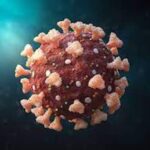Keto diet is associated with an increase in “bad” LDL cholesterol, which is also linked to heart disease.
New Delhi, October 07, 2018 :
Excerpts from Harvard Health Letter (Department of Nutrition at Harvard-affiliated Brigham and Women’s Hospital) : Low-carb, high-protein diets often grab attention. The Paleo, South Beach, and Atkins all fall into this category. They are also called ketogenic or “keto” diets. But a true ketogenic diet unlike other low-carb diets (which focus on protein) centers on fat, which supplies as much as 90% of daily calories.
The keto diet is primarily used to help reduce the frequency of epileptic seizures in children. For weight loss only short-term results are available. We don’t know if it works in the long term, nor whether it’s safe.
The keto diet aims to force your body into using a different type of fuel. Instead of relying on sugar (glucose) that comes from carbohydrates (such as grains, legumes, vegetables, and fruits), the diet relies on ketone bodies (fuel that the liver produces from stored fat).
Burning fat seems like an ideal way to lose pounds. But getting the liver to make ketone bodies is tricky. It requires that you deprive yourself of carbohydrates, fewer than 20 to 50 grams of carbs per day (medium-sized banana has 27 grams of carbs). It typically takes a few days to reach a state of ketosis and eating too much protein can interfere with ketosis.
Because the keto diet has such a high fat requirement, followers must eat fat at each meal. In a daily 2,000-calorie diet, that might look like 165 grams of fat, 40 grams of carbs, and 75 grams of protein. Some healthy unsaturated fats are allowed on the keto diet — like nuts (almonds, walnuts), seeds, avocados, tofu, and olive oil. But saturated fats from oils (palm, coconut), lard, butter, and cocoa butter are encouraged in high amounts. Protein is part of the keto diet, but it doesn’t typically discriminate between lean protein foods and protein sources high in saturated fat such as beef, pork, and bacon.
All fruits are rich in carbs, but you can have certain fruits (usually berries) in small portions. Vegetables (also rich in carbs) are restricted to leafy greens (such as kale, Swiss chard, spinach), cauliflower, broccoli, Brussels sprouts, asparagus, bell peppers, onions, garlic, mushrooms, cucumber, celery, and summer squashes. A cup of chopped broccoli has about six carbs.
Ketogenic diet has numerous risks.
- It’s high in saturated fat. One is supposed to keep saturated fats to no more than 7% of your daily calories because of the link to heart disease. Keto diet is associated with an increase in “bad” LDL cholesterol, which is also linked to heart disease.
- If you’re not eating a wide variety of vegetables, fruits, and grains, you may be at risk for deficiencies in micronutrients, including selenium, magnesium, phosphorus, and vitamins B and C.
- With so much fat to metabolize, the diet could make any existing liver conditions worse.
- The kidneys help metabolize protein, and the keto diet may overload them. (The current recommended intake for protein averages 46 grams per day for women, and 56 grams for men).
- The keto diet is low in fibrous foods like grains and legumes. It can lead to constipation.
- The brain needs sugar from healthy carbohydrates to function. Low-carb diets may cause confusion and irritability.
The popular low-carb diets (such as Atkins or Paleo) modify a true keto diet. But they come with the same risks if you overdo it on fats and proteins and lay off the carbs.







